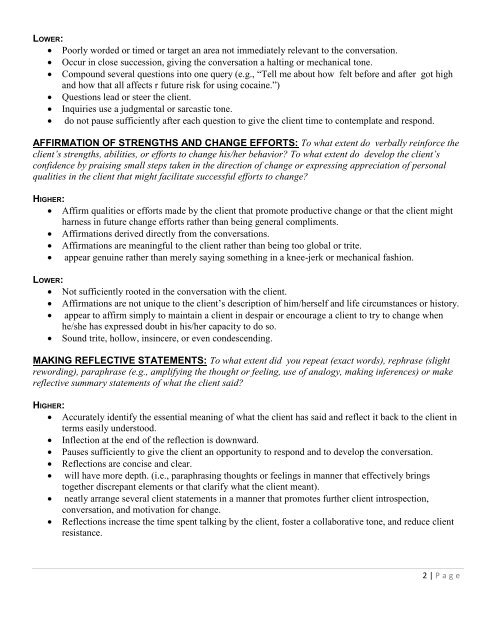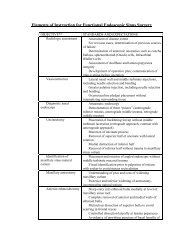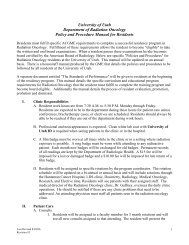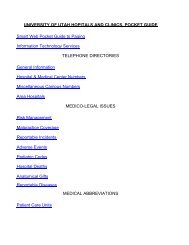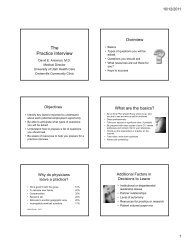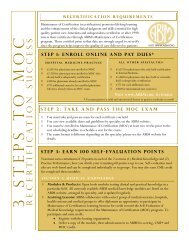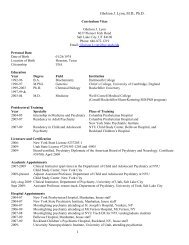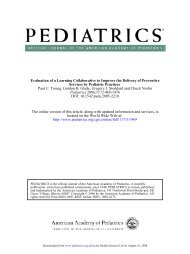Motivational Interviewing Ratings: Higher and Lower Skill Levels
Motivational Interviewing Ratings: Higher and Lower Skill Levels
Motivational Interviewing Ratings: Higher and Lower Skill Levels
Create successful ePaper yourself
Turn your PDF publications into a flip-book with our unique Google optimized e-Paper software.
LOWER:<br />
Poorly worded or timed or target an area not immediately relevant to the conversation.<br />
Occur in close succession, giving the conversation a halting or mechanical tone.<br />
Compound several questions into one query (e.g., “Tell me about how felt before <strong>and</strong> after got high<br />
<strong>and</strong> how that all affects r future risk for using cocaine.”)<br />
Questions lead or steer the client.<br />
Inquiries use a judgmental or sarcastic tone.<br />
do not pause sufficiently after each question to give the client time to contemplate <strong>and</strong> respond.<br />
AFFIRMATION OF STRENGTHS AND CHANGE EFFORTS: To what extent do verbally reinforce the<br />
client’s strengths, abilities, or efforts to change his/her behavior? To what extent do develop the client’s<br />
confidence by praising small steps taken in the direction of change or expressing appreciation of personal<br />
qualities in the client that might facilitate successful efforts to change?<br />
HIGHER:<br />
Affirm qualities or efforts made by the client that promote productive change or that the client might<br />
harness in future change efforts rather than being general compliments.<br />
Affirmations derived directly from the conversations.<br />
Affirmations are meaningful to the client rather than being too global or trite.<br />
appear genuine rather than merely saying something in a knee-jerk or mechanical fashion.<br />
LOWER:<br />
Not sufficiently rooted in the conversation with the client.<br />
Affirmations are not unique to the client’s description of him/herself <strong>and</strong> life circumstances or history.<br />
appear to affirm simply to maintain a client in despair or encourage a client to try to change when<br />
he/she has expressed doubt in his/her capacity to do so.<br />
Sound trite, hollow, insincere, or even condescending.<br />
MAKING REFLECTIVE STATEMENTS: To what extent did you repeat (exact words), rephrase (slight<br />
rewording), paraphrase (e.g., amplifying the thought or feeling, use of analogy, making inferences) or make<br />
reflective summary statements of what the client said?<br />
HIGHER:<br />
Accurately identify the essential meaning of what the client has said <strong>and</strong> reflect it back to the client in<br />
terms easily understood.<br />
Inflection at the end of the reflection is downward.<br />
Pauses sufficiently to give the client an opportunity to respond <strong>and</strong> to develop the conversation.<br />
Reflections are concise <strong>and</strong> clear.<br />
will have more depth. (i.e., paraphrasing thoughts or feelings in manner that effectively brings<br />
together discrepant elements or that clarify what the client meant).<br />
neatly arrange several client statements in a manner that promotes further client introspection,<br />
conversation, <strong>and</strong> motivation for change.<br />
Reflections increase the time spent talking by the client, foster a collaborative tone, <strong>and</strong> reduce client<br />
resistance.<br />
2 | P a g e


